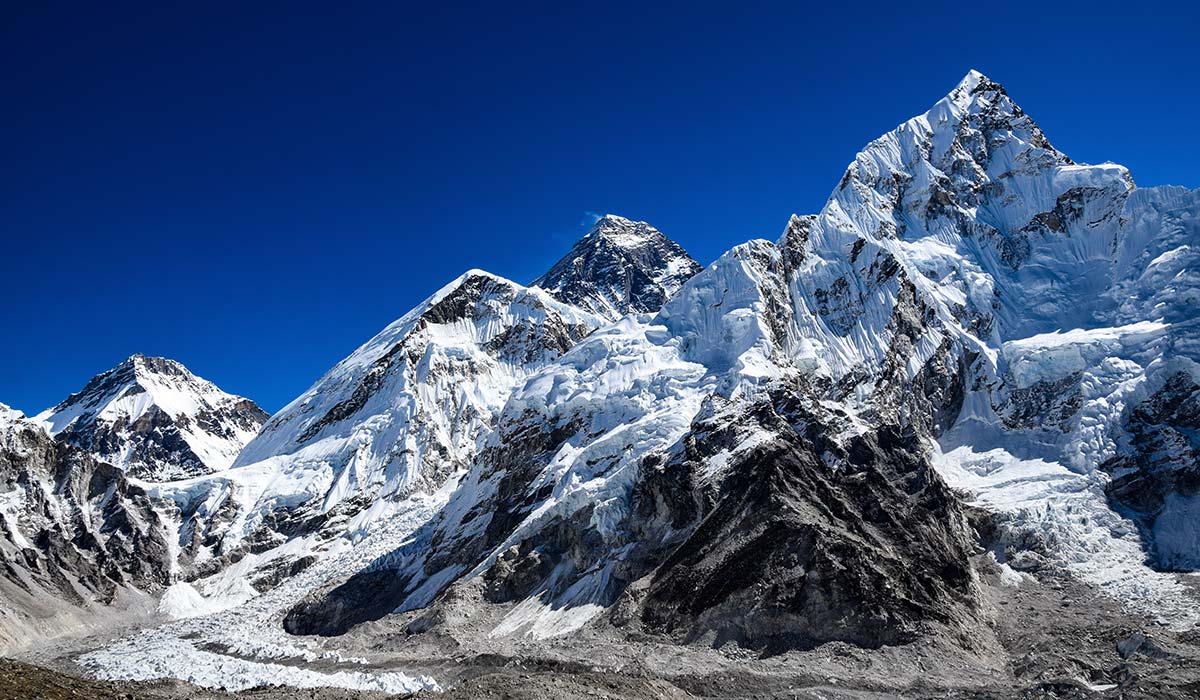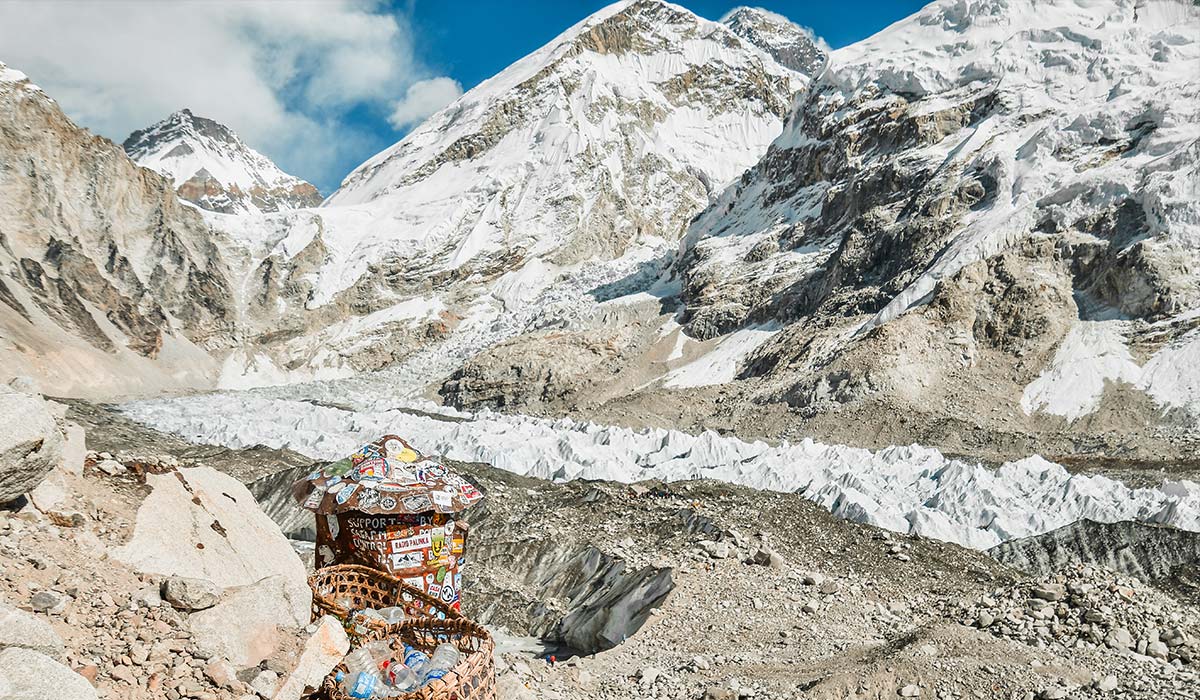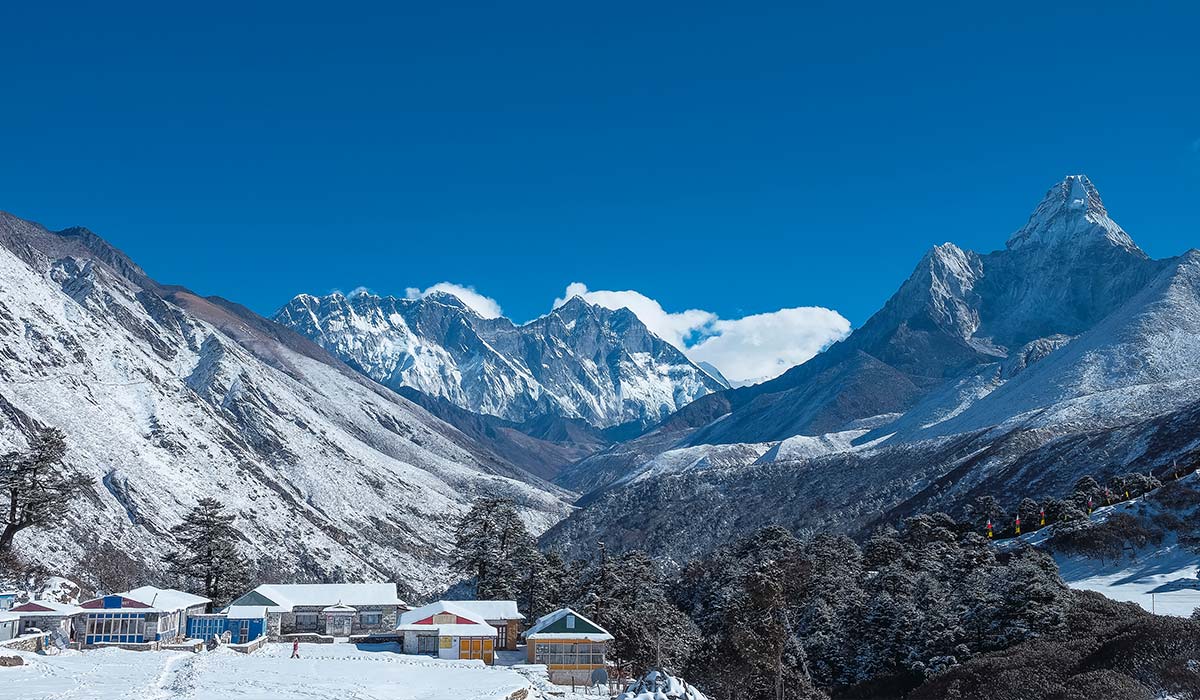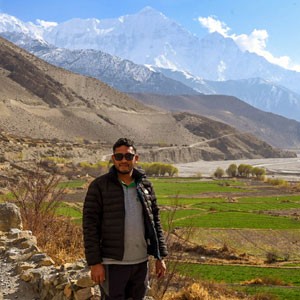Where is Mount Everest Located?
Mount Everest is the highest mountain on Earth, standing proudly of its place in the Himalayas on the border between Nepal and Tibet in China. It is a dream destination for many climbers, from trekkers and adventurers worldwide. Most people head to Nepal in an attempt to reach this section of the earth and view the majesty up close to the ever-popular Everest Base Camp trek.
Geographically, it is in the Mahalangur mountain range of the central Himalayas. On the Nepalese side, Mt. Everest belongs to Sagarmatha National Park, a UNESCO World Heritage Site boasting rich grasslands and rare wildlife. In the Tibetan region of Mount Everest, the mountain is normally known as Chomolungma, meaning "Goddess Mother of the World.". The naming of the mountain in this regard has an abysmal spiritual link, as locals hold the mountain as one with historical significance on both sides of the border.
The southern face of Mount Everest lies in Nepal, which offers the most straightforward climb to the summit. TrekkersflyintoLukla and hikethroughtinySherpavillages on their way to Everest Base Camp. This face is visited less often but is no less spectacular. The northern face lies in Tibet. Trekkers can travel to the Tibetan Base Camp but require special permits and a journey through the Tibet Autonomous Region in China.
Nepal and China both have breathtaking sides of Mount Everest, each difficult in its way. This part of Nepal is popular due to its easier accessibility and clear trekking paths. Whether in Nepal or Tibet, Everest's view astonishes people from all over the world. This towering mountain shows us the incredible power of nature and human determination.
Mount Everest’s Coordinates
Mount Everest is the highest peak in the world. It has a very peculiar latitude and longitude: 27.9881° N, 86.9250° E. These are the exact coordinates that define a location on the Earth's surface where Everest rises and are considered to guide trekkers and climbers to the famed location. The Himalayas host this point of latitude and longitude on the border between Nepal and Tibet high above sea level, thus forming a place that is unique and unforgettable for adventurers.
It has an astonishing highest elevation of 8,848.86 meters above sea level. It represents one of the most astonishing features of Mount Everest. The height was measured several times, with the most recent official reading agreed upon by Nepal and China in 2020. This is an exceptionally big mountain reaching such an elevation, which means one would need considerable preparation as a climber to be able to face the thin air and the challenge of the hill topography.
It is famous not only for its height and coordinates but also for being a strong cultural and historical symbol. It is located in the Khumbu region of Nepal, surrounded by the highly enriched Sherpa culture, further enhancing its strong appeal. Thousands of explorers worldwide get attracted to these coordinates every year. Everest means attainment and perseverance. Its location and elevation combined create a true wonder of the world, beckoning adventurers ready to try it for its towering heights.

Geography of Mount Everest
Mount Everest is located in the Himalayan Range, running through five countries: Nepal, India, Bhutan, China, and Pakistan. The range contains some of the highest peaks in the world, which Everest heads itself. It is the Earth's highest mountain at an altitude of 8,848 meters above sea level. Other famous peaks in the neighborhood include Lhotse, Nuptse, and Makalu. When put together, all these constitute a landscape of breathtaking beauty.
An area in Nepal named Khumbu offers breathtaking views. Trekkers can observe towering mountains, deep valleys, glaciers, and rushing rivers. This really rugged area has the Dudh Kosi River running right through it. The river further beautifies the terrain, which contains many glacial lakes, such as those near the Khumbu Glacier. The glacier itself is one of the largest here.
The geography of Everest is very varied, from the steep to rocky southern side of this mountain in Nepal. It has razor-sharp ridges that go to the much gentler northern side of Tibet. Beautiful valleys and glacial moraines go on to further enhance this mountain's natural beauty.
The south-side Everest Base Camp is pretty lively. It's for both trekkers and climbers and offers a unique perspective of the mountain and its surrounding peaks. Visitors are often captivated by the local Sherpa culture, which thrives in this remote yet awe-inspiring location. The rugged geography around Mount Everest is much in awe of its raw beauty.
Everest in Nepal vs. Tibet: Two Approaches
Mount Everest forms the border between Nepal and Tibet. There are two ways to approach the mountain. The southern route through Nepal offers one kind of view, while the northern route through Tibet affords another.
The southern part of Nepal is the most popular mountain area with trekkers. It passes lush valleys and vibrant Sherpa villages to show you the towering face of Everest close-up. You catch the irresistible beauty of the Himalayas as you walk through thick forests, cross rivers, and reach higher altitudes.
Teahouses and monasteries dot the trail to ensure you get a taste of the culture. The base camp in Nepal offers the most spectacular view of Everest's massive South Face, making it a favorite among trekkers.
On the other hand, there is the northern approach from Tibet. The path to Everest Base Camp from this part of the world is rather more rugged. Travelers reach the base camp by vehicle instead of on foot. Though somewhat rougher, the route also provides good mountain views and is somewhat more remote and quieter than the southern trek. Both approaches are breathtaking in their way and have different charms.
National Parks Surrounding Mount Everest
Mt. Everest is flanked by two great national parks: Sagarmatha National Park in Nepal and Qomolangma National Nature Preserve in Tibet. These parks protect the unique wildlife and flora of this area, as well as the cultural heritage and conservation efforts.
The Sagarmatha National Park is one of the UNESCO World Heritage Sites because of its breathtaking landscapes and diverse wildlife. It shelters some of the rare animals, including snow leopards, Himalayan tahr, and red panda amidst the Himalayas. The mountains have very lush forests of rhododendrons and birch, housing many species of birds and adding vibrant life to them. Nepalese efforts in the park work toward preservation- one, of nature, and two, the culture of the Sherpas, which flourishes in the Everest region.
On the other hand, Qomolangma National Nature Preserve stretches over huge tracts of wilderness on the Tibetan side. It protects such endangered species as Tibetan antelopes, snow leopards, and black-necked cranes. Junipers and alpine plants are only some of the unique flora that color the rigid landscape. Conservation here emphasizes biodiversity and local Tibetan communities that consider the mountain very sacred.
These parks show the importance of conservation on Mount Everest's behalf. This region's wildlife and flora have been particularly hard hit. However, various conservation efforts in Nepal and Tibet are continuously being made to ensure that these ecosystems can thrive for years to come.
The Cultural Significance of Mount Everest
Mt. Everest means so much culturally to the locals and the rest of the world. To the Sherpa, Everest is not just a summit but a guardian. In Nepali, it is called Sagarmatha, which means Head of the Sky. In Tibetan, it's called Chomolungma, which means Mother Goddess of the World.
Both the Sherpas and Tibetans consider Everest asacredplace. Legends and myths about Everest add to the attraction. According to locals, the mountains house mighty spirits that help protect the region and its occupants. Most Sherpas offer their prayers and conduct ceremonies before climbing to seek blessings for safety and success. Such respect reflects their deep connectedness with Everest. It emphasizes their view of the mountain as life rather than a challenge to overcome.
Apart from these cultural ties, Everest holds a spiritual significance for Buddhists. Many monasteries, like the Tengboche Monastery, line the region. They are frequently visited by climbers and trekkers who come for blessings. The spiritual rites, praying flags, and chants at these sites remind locals of the deep respect they have for this mountain.
The several names of the legends attributed to Mount Everest symbolize a notion of reverence and respect. It is culturally much more than just the height of the peak that touches hearts. The people living in its shadow and people visiting from afar.
Climate and Weather Conditions on Mount Everest
Mt. Everest hosts one of the most extreme weather conditions in the world. Because of its high altitude, it remains freezing or below throughout the year. In winter, the fierce winds and freezing temperatures below -60°C make climbing Mt. Everest almost impossible. In summer, day temperatures may reach 0°C -5°C. The temperature drops further. Near the summit, the temperature flutters around -15°C to -20°C. From June to September, heavy rains and snowfall during the monsoon season make reaching this summit very dangerous.
The best time to go to Everest is during the two main climbing seasons: spring (April and May) and autumn (September into November). During spring, temperatures are a bit warmer and winds calmer, affording a safer period to reach the summit. In autumn, the rains of the monsoon clear up and give way to clear skies and stunning views amidst more stable weather.
The weather on Everest is notably controlled by its altitude. The higher a climber goes, the lower the level of oxygen. Thus, the air becomes colder and windier. Above 8,000 meters or 26,247 feet, it is called the Death Zone. The air is thin and dangerous, and the weather is fickle, even for the most experienced climbers.
Planning around these changes in season will make a big difference. Thus, the right timing of a visit ensures the safety and success of a climb or trek in the Everest region.
How to Reach Mount Everest?
The approach to Mount Everest is an exciting journey. There are a few highly popular routes you can take. The two most famous routes towards Everest start from Nepal and Tibet.
The common route from Nepal is the trek to the base camp of Everest. The trek starts in Lukla, where you take a flight from Kathmandu. A hike will take around 12 to 14 days in total. You will pass through some picturesque villages, high-suspension bridges, and some great mountain views. Along your way, you could familiarize yourself with the local Sherpa culture. It would also make your adventure very special.
Another great option to keep in mind would be taking a helicopter tour. It is an option from Nepal. This is a quicker option and allows you to see the amazing views of Everest and surrounding peaks from the sky. Usually, helicopter tours take off from Kathmandu and land at Everest Base Camp for a different perspective toward the highest mountain in the world.
The base camp in Tibet can also be driven. Usually, the tour starts from Lhasa and takes about 8 to 10 days. This route encompasses Tibetan culture and landscapes, home to very ancient monasteries that one may have a chance to see en route, and great views of Everest as one approach.
No matter whether you decide to trek, fly, or drive there, the ways to Mount Everest are not to be forgotten. Each one of these ways is an adventure in itself that has taken aback by the grandeur of this iconic mountain.
You May Like: Everest Base Camp Short Trek

Why Visit Mount Everest?
Nepal is a trekker's paradise, with the tallest mountain in the world. Eightout of the fourteen mountains are over 8,000 meters tall. At the center of all these wonders, Mount Everest stands as the greatest spotlight. The pure beauty of nature and the strong culture give you a thrilling trekking experience halfway up the highest mountain in the world, which is simply outstanding.
The Everest Region itself is not a landmark, following the historic route to the base of the world's tallest mountain. During the trek, you will get unparalleled glimpses of beautiful forests, Sherpa villages, glacial moraines, and stunning foothills. This is really a paradise filled with natural beauty and breathtaking sights. Here, you experience cold weather with warm hospitality and rugged landscapes with soothing aura, discovering magical corners at every turn-which you hardly expect.
Many great expeditions and feats have been recorded on Everest. First ascended by Sir Edmund Hillary and Tenzing Norgay Sherpa in 1953. Hundreds of climbers later summited this mountain. Climbing to the top is not merely a climb to the top. It is an opportunity to experience the culture and traditions of the Sherpa people inhabiting this region.
It is also famed for thrilling highlights in the Everest Region. The Lukla Airport is located in Sagarmatha National Park’s Namche Bazaar. Each place contributes something to the journey, whether vibrant local life or stunning mountain views.
In the final analysis, Everest is infinitely more enchanting than words can ever say. This could be the reason travelers around the world are obsessed with its beauty, from trekking to the base of the mountain or climbing onto its slopes. A visit to Mount Everest definitely promises an adventure that is different and enriching. If you feel tempted to explore this beautiful region, Dream Heaven Adventure will help you plan your perfect trip.
Frequently Asked Questions (FAQs) on Mount Everest
Where is Mount Everest located?
Mount Everest is located in Nepal and links with the Tibet border to China in the Himalayas. The Nepalese side is more popularly known for trekking, while the Tibetan side offers scenic road drive access.
Does anybody get a chance to climb Mount Everest?
Mount Everest Climbing requires months of extended physical training and high-altitude experience. Because of the extreme altitude and conditions, considerable planning is required. However, anyone with appropriate fitness and proper preparation can attempt one.
Is it safe to summit in Mount Everest?
Trekkers generally reach Everest Base Camp safely, but proper acclimatization depends on favorable weather and staying on the trails. The dangers occur only when one climbs to the summit.
What is the best time to visit Everest?
The pre-monsoon season is from April to early June, and the post-monsoon season is from September to November. It is considered the ideal season when the weather is fine. There is less disturbance of clouds in your view.
How do you reach Everest Base Camp?
You fly to Lukla from Nepal and start a trek, which will take you about 10-12 days to reach Everest Base Camp. From Tibet, you can drive right up to the base camp.
Do you need a guide for Everest?
Guides are encouraged for safety, acclimatization support, and navigation on high-altitude routes like Everest.
How cold does it get on Everest?
The temperatures at the summit of Everest can fall as low as -60°C (-76°F) in winter, while higher altitudes are extremely cold year round.
What is the elevation of Mt. Everest?
Mt. Everest has been officially declared 8,848.86 meters above sea level, making it the highest mountain in the world.
Is it possible for anyone to climb Mt. Everest?
Besides, climbing Everest is beyond everyone's reach due to its extreme altitude and unbearable weather conditions; it requires physical training, experience of high altitude, and considerable planning.
What is the other name for Everest?
The locals here in Nepal call Mount Everest Sagarmatha in Nepali, and Tibetans call it Chomolungma in their local language.
How many people have died on Mount Everest?
Since the commencement of climbing up this mountain, there have been more than 340 people who died while attempting to reach the summit or return from Mount Everest. This number is not exact since the expeditions and rescue are always in process.




